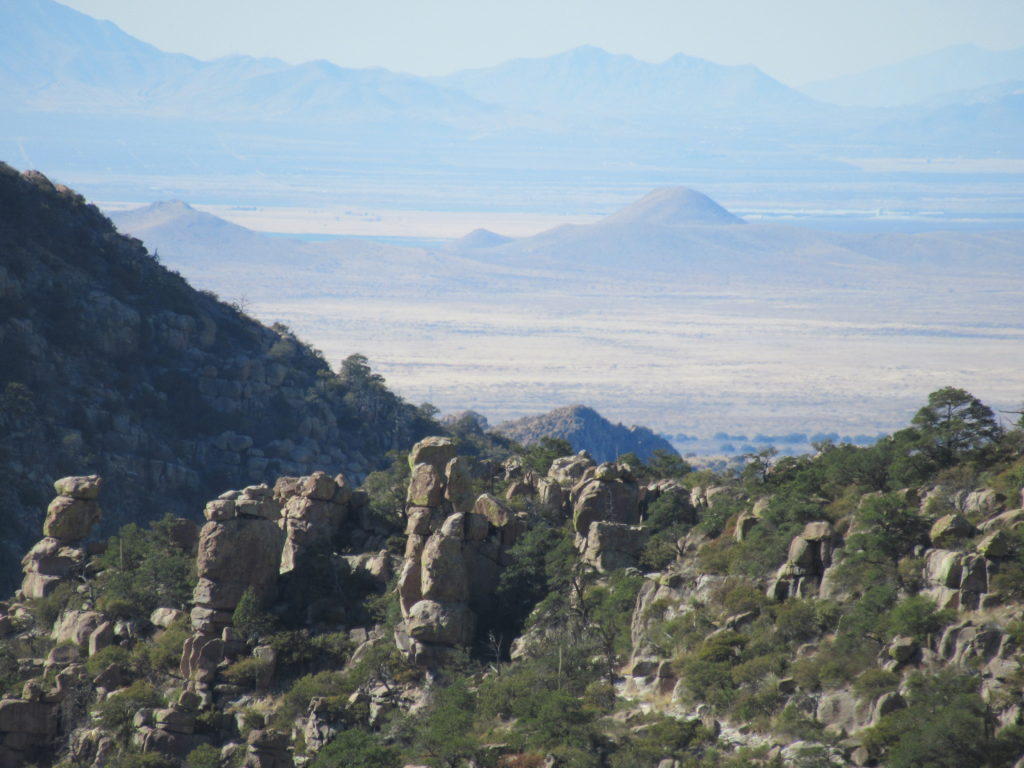As part of our “Winter 2021 Isolation Tour” we decided to stop at several National Monuments (NMs) on our way to a month-long stay in Yuma, AZ. There are 129 NMs in the US and they span a wide variety of venues ranging from mini-National Parks to historic buildings to ruins. We’ve previously been to a dozen or so and find them to be the “short stories” of the National Park Service. We made four stops in early January as follows.
Waco Mammoth NM. This monument is in Waco, TX and is basically a covered archeological dig. The focal point is an open excavation of several extinct Columbian Mammoths. The Mammoths looked like large elephants and died out about 65,000 years ago. To date, 23 mammoths have been unearthed including a “nursery herd” consisting of adult females and young calves. Many of the finds are housed at nearby Baylor University.
Chiricahua NM. This Monument, pronounced “cheer a cow a”, is one of “mini-national parks”. It is a large mountainous park located southeast corner of Arizona with and features rock pinnacles that resemble the hoodoos of Bryce Canyon. It was the home of the Chiricahua Apache Indians until the government forced them off the land in the late 19th century. We took a day to see the park and hike the Echo Canyon and the Hailstone trails. It was stunning and we even encountered a young buck on the trail that stared us down before reluctantly yielding the trail to us.
Casa Grande Ruins NM. The ruins are located just south of Phoenix and are what is left of a complex of villages built 700 years ago by the Huhugham Indians. Some archeologists refer to them as the “first masters of the American desert” as they developed a sophisticated irrigation system using the Gila River for water. The buildings and walls that comprised the ruins were made of concrete-like mixture of sand, clay, and limestone. It was an interesting and educational visit, albeit a short one.
Organ Pipe Cactus NM. We had hoped to stop here for the past couple of years but it didn’t because it’s quite a way off the beaten track. This winter seemed like the perfect time to see it. The park is quite large – roughly 20 x 20 miles – and is entirely mountainous desert. It is located on the Mexican border halfway between Tucson and Yuma. As the name implies, it features the organ pipe cactus, but there are many other cactus species as well.
We hiked the Victoria Mine trail and saw remains of one of the first silver mines in Arizona. We also drove the spectacular Ajo Mountain Drive. However, we only saw a small piece of the park and will need to come back sometime in the future.
We stayed in town of Ajo about 35 north of the monument. This is an old mining town that supported the workers at the now defunct New Cornelia copper mine. When the mines closed for good in the mid 80’s the workers left and the retirees moved in. However, it is not what would be considered a “resort town”. It’s kind of a run-down, partially abandoned outpost in the middle of nowhere. It features large abandoned open pit mines, lots of mine tailings, and ore processing ponds. We had a couple of spooky nights when the coyotes started howling from all sides of our campsite.











































